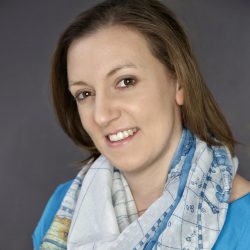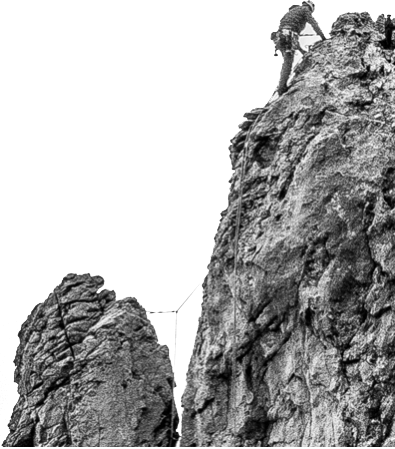Intellectually excitable people are generally proud of their capacity for thought, and that includes thinking about the process of thought itself. Even so, an individual can only take such meta-cognitive exploration so far on his or her own. The world is hugely complex, and we view it through our own imperfect lenses. It takes an understanding of others’ lenses—and what all of our lenses do—if we’re truly to see the world in its multi-dimensional splendor.
So, when you were in school, did you learn how to practice this sort of meta-thinking? How about how to understand co-thinking processes? How about when you were in college? Grad school, maybe?
For those who answered “no” to the above (which is all but the luckiest among us) Vrije Universiteit Brussel (the Free University of Brussels, or VUB) has launched a brand new program to fill this void. The second semester of the brand new School of Thinking kicks off this month, guiding its first student cohort to combine the “Four Cs”—critical thinking, creativity, collaboration, and communication—into a more effective, more intentional process of thinking.
As this first-of-its-kind program’s inaugural semester was underway, director and designer Dr. Marta Lenartowicz sat down to chat with Third Factor about what they hope to do and how they aim to do it.
A Bridge Between Disciplines
The School of Thinking was born from discussions by scholars in VUB’s Center Leo Apostel for Interdisciplinary Studies (CLEA). “The place is a heaven for those ‘ugly duckling’ academics who just can’t locate themselves in any discipline. The way they want to go about their research interests doesn’t really fit anywhere,” Lenartowicz explained. “It’s a very interesting group of people.”
Lenartowicz said her background in education spurred her desire to create something that would engage this idiosyncratic group of scholars in some kind of shared activity. The theme that would bring them together was less obvious—but a few influences came together to provide the spark. The first of these was the identity of VUB itself: “It’s the Free University of Brussels,” Lenartowicz explained. “It has this slogan: ‘Thinking must never submit itself’”—and, she added, a demonstrated commitment to living up to that ideal. Focusing on thinking, then, “felt like a natural extension of that spirit.” But what does it actually take to gain freedom in thinking? This, they recognized, was a question worth exploring in depth.
Then there was the Evolution, Complexity and Cognition Research Group run by Professor Francis Heylighen, the director of CLEA and now an instructor at the School of Thinking. Heylighen is a cybernetician who has also written about the problems of gifted people. “His approach to selecting people for his team is about observing how they think, much more than about buying into what they are talking about at the moment. It’s that original ‘how’ that makes a huge difference in the long run,” Lenartowicz said.
[Heylighen’s] approach to selecting people for his team is about observing how they think, much more than about buying into what they are talking about at the moment. It’s that original ‘how’ that makes a huge difference in the long run.Dr. Marta Lenartowicz
The School of Thinking’s faculty represent its transdisciplinary origins brilliantly. Jean Paul Van Bendegem is a mathematician and logician who is well known in his native Belgium, where the media often call to ask about the logic of political arguments; he wrote a book about Sherlock Holmes and his deductive thinking. Iwona Soltysinska, from Poland, teaches something called co-thinking—a psychoanalytical understanding of what is happening “under the surface” when people gather to think together in groups and organizations. Gerard De Zeeuw is well known for design thinking and action research. And Lotte van Lith, a life coach to gifted people who has shared her story with Third Factor, teaches the psychology of extraordinary intelligence, including the internal and external factors that contribute to its flourishing. These are just a few, selected somewhat at random to show the breadth; you can see the full list of instructors at their website.
Who Wants to Learn to Think?
Then there are the students. “We were’t sure it would be easy to recruit people because it would look very unpractical,” Lenartowicz said, adding that precisely this “unpractical” element—the view that thinking has value on its own—was key to the program, preventing the focus from shifting to applications and goals. “But the newspapers were enthusiastic when they heard about it. They helped to spread the news, so once they did, we had a full group for the first year.”
So who are these recruits? Lenartowicz explained that the program is, in essence if not explicitly, intended for those people who are sometimes referred to as “gifted adults.” “When you start speaking about thinking and about abstraction, there’s a group of people that just jumps, that immediately is interested,” she said. “It’s a small group but very distinct.”
When you start speaking about thinking and about abstraction, there’s a group of people that just jumps, that immediately is interested. It’s a small group but very distinct.[/perfectpullquote]
Dr. Marta Lenartowicz
It’s otherwise difficult, Lenartowicz told me, to compose a representative student profile because most of the applicants are complex, multifaceted mavericks, describing themselves as things like “philosopher+entrepreneur” or “manager/artist/ex-scientist.” “If you take the literature about gifted people, there is no student in the program that wouldn’t fit that. They have many obsessions, many professions,” said Lenartowicz. She described one student just to give an example: it was “somebody who studied three different things, including philosophy, psychology, IT, law—connecting lots of things.” Other students in the program have PhDs; some are active professional researchers. “We have Eurocrats, policy development officers, entrepreneurs, quite a few are IT managers,” she continued.
Interestingly, the program seems to appeal to an older age group than does a typical graduate program. The average age in this class is between forty-five and fifty; only one student is under thirty, and a few are in their sixties. “Around this age, the idea that we have to address thinking itself resonates,” Lenartowicz said. For young people who have just joined a profession, you want to explore it and exercise it—but after some time, you see there is maybe something more you could explore.”
All of the students, moreover, are highly active in the world. “The distribution of age is wonderful. There’s life after 40,” Lenartowicz said. “There is so much to do!”
Choreographing the Curriculum
In addition to her role as program director, Lenartowicz is the lead designer of the curriculum. “It’s not merely about content, but about choreography,” she told me. “People and conversations are the fabric from which you create something like this. The content pops in when needed.”
When I asked her what they considered core classes, she gave me a response that did indeed get me thinking: they have none. “There is no core idea, no core model. We were very serious about this,” she said. In a typical educational program, she explained, students learn a certain model, with a basic ontology and basic dimensions. Students come out of those programs trained in applying that specific framework.
This is the opposite of what the School of Thinking seeks to offer its students. Simply applying a model or two is too basic—“and, anyway, that’s something you can learn anywhere else,” Lenartowicz said. Recognizing that no model exists that will enable us to mentally map those extremely complex “wicked problems” in our individual minds, the school instead prepares students to better understand how they’re using whatever models they come across—and how these models use them. “Cognition always creates simplifications. What we can do is zoom out from those simplifications and include the perception of ourselves as players that are acting on those lenses,” Lenartowicz explained. “We want to show that the thinkers, their selective blindnesses, and the distinctions they are invested in maintaining are themselves a product of thinking—that is, a default set of constraints. If we are within those, we are not exploring the whole spectrum of what cognition does.”
To construct this choreography of cognitive exploration, the School of Thinking uses modules that bring together other disciplines’ models and frameworks. They include topics like cognitive science, cybernetics, psychology, and philosophy, which, according to Lenartowicz, “usually speak about similar concepts but with different language. So we do this intermapping. We build bridges rather than build our own new island.”

All of this is, of course, quite abstract, so actually practicing it is essential. In a course called the Thinking Studio, students do precisely this. “In itself it doesn’t have much content,” Lenartowicz said, “but it’s kind of an integrative platform in which we discuss what we have been learning in other classes and try to integrate those.”
Then, in a course called Beautiful Minds, students focus on developing “the habit and skill to affirm the extraordinary quality of the cognitive performance in others,” as the program web site puts it. The first session is getting underway as this issue goes to press (January 2020).
It’s one of the pearls of the program,” Lenartowicz said. “When you want to be a very advanced thinker, what you develop the most is usually critical thinking. You become skeptical. You will find gaps and errors in anything you hear or read. We’re great at this—deconstruction, criticism, going on and on. But the simple appreciation of how someone else thinks—noticing the beauty in it—this is something we want to explicitly teach! We’ll be learning how and what to observe, how to affirm, how to encourage, how to celebrate. If we want humanity to think better, we must learn how to reinforce that in one another—and how to stop habitually leveling everything down. We are social animals: we really tend to do what others expect of us.”
The simple appreciation of how someone else thinks—noticing the beauty in it—this is something we want to explicitly teach! If we want humanity to think better, we must learn how to reinforce that in one another.
Dr. Marta Lenartowicz
The course will also explore the evolution of intelligence, showing that the forms and products of thinking that we collectively choose to affirm have evolutionary consequences. “We would like people to understand that by choosing to imitate something, they are a powerful force,” said Lenartowicz. “By making such selections they are basically steering the course of the evolution of the human race. Everyone has a say in that. Every choice matters.”
The Student Experience Thus Far
Students in the School of Thinking meet in person every three to four weeks. Between sessions, they have a lot of reading, along with assignments to, say, observe their own cognition or write a small report. When I spoke to Lenartowicz in December 2019, the first class had attended four sessions. I asked her how they have responded so far.
I can’t decide if it’s complaining or the opposite,” she laughed. “They are noticing how much we’re making them work—and complaining that they have lives as well!”
The program also applies to these gifted adults a pedagogical approach long advocated by educators of gifted children, Lenartowicz said: “We challenge them. We give them too much; we don’t simplify.” For example, when teaching critical thinking, the instructor explained quantum mechanics. The professor teaching logic assumed everyone knew basic logic. The assumption isn’t that students will know all of this already, however: “There’s a lot of noise that you can discard,” Lenartowicz said. “For each student, it’s different what they are paying attention to. Each student takes what he or she needs—there’s just so much.”

The students are also noting the importance of divergent thinking in their work. “Everyone said they were trying to connect all the dots—but how to connect them?” Lenartowicz said. “I said we will be adding and adding and adding dots, so see how your thinking can become creative. I think they appreciate this aspect.”
In Search of Wisdom
Interestingly, though Lenartowicz noted that it can be hard for academics immersed in a single discipline to break out of their own models and language, this hasn’t been a problem for their students. “When you are in an interdisciplinary environment, you learn to speak normal language, not jargon,” Lenartowicz explained. “You lose some of the appearance of a very educated person, but if you simplify, then you can communicate.”
She also noted that while Kazimierz Dabrowski’s theory of positive disintegration isn’t the core focus of the program, it is nevertheless present in what the School of Thinking is doing: “What we are teaching and exploring in the program is the positive disintegration of mental models—including the mental model of the thinker’s ‘self.’ There’s a huge emphasis on observation of your own thinking. Without that, you cannot change anything; without it you go on in an automatic way.”
This, of course, is represented in Dabrowski’s work in level IV dynamisms such as education of oneself and subject-object in oneself. The program explicitly encourages the inner psychic transformation that is characteristic of this level. In one course, the students keep a journal—in which they must write about themselves in the third person. “We make it painfully explicit, to observe yourself in this way. It’s an Aristotelian method, writing about yourself in the third person. There is a study that says this contributes to increased wisdom.”
This left me with one final question for the program’s director: according to the School of Thinking, what is wisdom, anyway?
“I will very simply say that wisdom is how we choose to use our intelligence,” Lenartowicz said. “It’s intelligence applied to intelligence itself.”
Wisdom is how we choose to use our intelligence. It’s intelligence applied to intelligence itself.
Dr. Marta Lenartowicz
One key choice she flags for her students—and for Third Factor readers—is the possibility of choosing to apply it to our internal world, including our feelings. “One of our instructors, Edward Necka, has just been explaining in class that we might see emotional intelligence not as a different kind of intelligence, but as intelligence applied to emotions.” If you invest in observing and understanding your own emotional state and that of others, and if you watch how they follow from each other, then you will have tapped into an essential—but often overlooked—component to effective thinking. And it is precisely this act of choosing what to observe, Lenartowicz said, that is what it means to be wise.
The School of Thinking may be inaccessible to many Third Factor readers, given its location, master’s degree prerequisite, and tuition. The reflections its director describes, however, are accessible to all of us.
So, dear readers, how do you use your minds?




